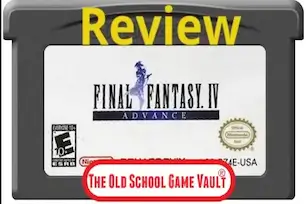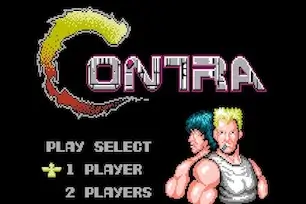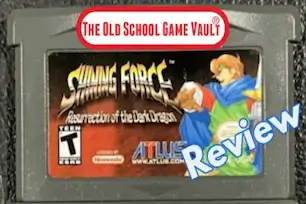I became a Final Fantasy fan in 1997 with Final Fantasy 7, and have played every (non-MMO) game in the series since. I only just now went back to the game in the series most likely to give Final Fantasy VII a run for its money as the best Final Fantasy ever: Final Fantasy VI Advance (originally released in 1994 for the SNES).
TL;DR – Final Fantasy VI Advance GBA Review
- Final Fantasy VI Advance remains one of the most narrative-rich RPGs, with an ensemble cast and emotional character arcs.
- Kefka stands out as one of the most compelling villains in Final Fantasy history, adding depth and unpredictability to the story.
- The first two-thirds of the game are decent but the final third elevates it into a timeless classic with plot twists and side quests.
- Gameplay includes classic turn-based combat, multi-party dungeon mechanics, and rewarding exploration.
- Nobuo Uematsu’s soundtrack and the GBA enhancements (new dungeons, improved translation) make this version highly recommended.
I wasn't sure if a game from the SNES era could be as fun, especially after playing the groundbreaking Final Fantasy VII. However, even with a slow start, it proved to be captivating.
The Table of Contents
Why Play Final Fantasy VI Advance (GBA Version)?
Even 25+ years after its original release. The core of the Final Fantasy RPG experience is definitely here – you assemble a team of adventurers to save the world from an overpowered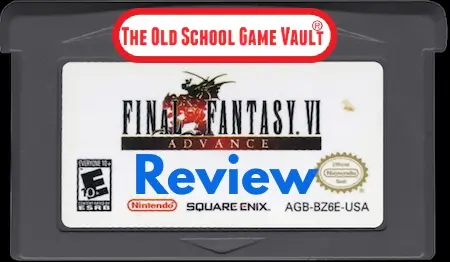 menace.
menace.
You visit towns, traverse a world map, meet a guy named Cid (one of the better Cids in the series), get an airship, and (even more so in the Game Boy Advance port) explore side quests and optional bosses to your heart’s content.
But a big part of what makes Final Fantasy VI one of the best Final Fantasy games ever is the way you get to know this particular team of adventurers.
Final Fantasy VI Advance Gameplay Mechanics (GBA)
Turn-Based Combat System
Fans of the series will recognize these features: turn-based battles that happen randomly in dungeons and on the world map, towns filled with NPCs and shops, Chocobo mounts, and airships.
I was a little disappointed by the battle mechanics in the first half -- it felt too easy to win by mindlessly employing a few overpowered attacks (Edgar and Sabin's special moves alongside Terra and Celes's magic).
After the plot twist, battles got more challenging though, and the introduction of the new mechanic of multiple dungeon parties made things even more interesting. It's important to mention that most characters' levels increase automatically after the plot twist.
So, if you find the first half a bit dull, you can rush through it. You don’t have to worry about being so weak in the second half.
Character Development and Ensemble Cast
Most other Final Fantasy games have one clear central protagonist. Or at least a character that the story is mainly focused through (Cloud, Squall, Zidane, Tidus, etc.). In Final Fantasy VI, though, the focus is spread out more through the ensemble.
The story focuses more on some characters (Terra, Locke, Celes) than others (Gau, Mog, Gogo), but there's a marked difference -- Final Fantasy VI does not feel like one person's story, but that of a group of people who each have their own stories and connections to the overall plot.
Final Fantasy 6 Advance Story and Plot Twists
Plot Twists That Redefine RPG Conventions
Kefka, one of the game's villains (who reminded me of Heath Ledger's Joker from (The Dark Knight), is also one of the best villains in all of Final Fantasy -- fascinatingly, repulsively sadistic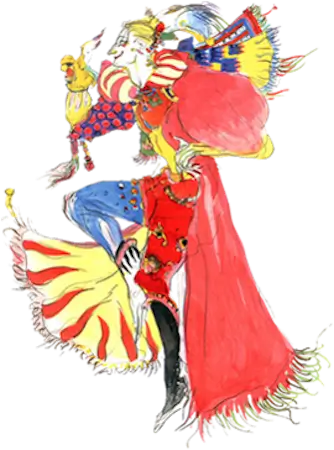 and nihilistic.
and nihilistic.
There's a major plot twist about 2/3 of the way through Final Fantasy 6 for GBA. I won't spoil anything, but if you want to be surprised—it's really worth it—you should avoid looking up too much online about FFVI.
This unexpected turn of events not only reshapes the narrative but also alters how players approach the game, making it a standout experience in the RPG genre.
The impact of this twist enhances the emotional weight of the story and keeps players invested in the characters’ journeys as they navigate through the challenges that follow.
Memorable Characters and Their Arcs
Many of the characters’ stories were genuinely moving in one way or another, and their emotional terrain was often far from simple in ways I can’t remember experiencing to a similar degree in any other game from the SNES era except maybe, maybe FF4 which I wrote a nice Final Fantasy iv Advance review you can read or what some call Final Fantasy 2.
GBA Version vs SNES: What’s New in Final Fantasy VI Advance
Enhanced Features in the Game Boy Advance Edition
The last third of Final Fantasy 6 Advance is definitely the best part of the game. I believe this is a big achievement. One highlight is that you can spend time on side quests. This allows you to explore the characters' individual challenges, both from their past and present.
These reminded me of the "Loyalty Missions" from Mass Effect 2 (which I found interesting and enjoyable in that game), though I think Final Fantasy VI does it better.
Comparison with Other Final Fantasy Games
In terms of gameplay, it was fine but nothing special in the first two-thirds of the game, while the last third makes Final Fantasy VI Advance a classic RPG experience in terms of both story and gameplay. The way the story concludes after the final battle adds a nice capstone to all the good work that has gone before.
The Emotional Impact of Final Fantasy VI
Character Narratives that Resonate
It’s a testament to the quality of the story and gameplay, that I haven't even had time to mention the soundtrack until now. It's one of Nobuo Uematsu's best -- this is definitely a portable game that you should pop in the headphones for.
When I started, I still rank Final Fantasy VII as my favorite Final Fantasy game, but Final Fantasy VI is right up there with VII and X at the top of the list.
Musical Score and Its Role in Storytelling
A remake of Final Fantasy VI for iOS and Android, part of the trend of video game remakes, will lighten the level-grinding, which might address some of my critiques of the game's first half.
Side Quests and Exploration in Final Fantasy 6
Engaging Optional Content
While I initially doubted that Final Fantasy III could rival Final Fantasy VII because of its SNES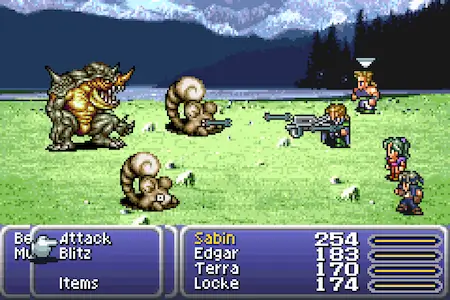 origins, I discovered that the last part of Final Fantasy VI Advance proved it to be a formidable competitor.
origins, I discovered that the last part of Final Fantasy VI Advance proved it to be a formidable competitor.
In Final Fantasy 6 for GBA, the side quests are very important for character development. They uncover new details about each character's story.
Engaging in these additional challenges often led me to unique items and powerful abilities, allowing me to tailor my party strategy.
I liked exploring different optional dungeons. They had interesting puzzles and needed different character skills, which made the gameplay better.
The Importance of Side Characters
In the last third of the game, some optional dungeons need you to bring two parties. This means you will control 6 to 8 characters instead of the usual 3 to 4. This allowed me to try out characters I hadn’t played much before. To manage this, I divided my strong characters between the two groups. This meant both groups were weaker and faced more danger in their battles.
Final Thoughts: Is Final Fantasy 6 for GBA Still Worth Playing in 2025?
We rate Final Fantasy VI Advance an 8.8/10 — a ★★★★☆ on our retro RPG scale.
Final Thoughts on Final Fantasy 6 Review
Overall, I found the first two-thirds of Final Fantasy VI Advance to be decent, but not outstanding. The introduction to the game mechanics and world was good. However, the pacing was sometimes slow and did not provide enough detail. This made me wish for a more engaging experience.
However, the last third truly transforms Final Fantasy 6 for GBA into a classic RPG. This is when the major plot twist occurs, dramatically shifting the narrative in video games and raising the stakes. I became very interested in the characters as their stories developed. The gameplay also changed, adding new strategies, like having different party dynamics during battles.
The optional content and side quests added significant value, offering rewards that enriched my experience and encouraged exploration. As I played the game, I felt a strong bond with the characters and their stories. In the end, everything came together in a satisfying way.
Looking back, the earlier parts were not very exciting. However, it was the final acts that made Final Fantasy VI Advance a timeless classic in the RPG genre. The combination of emotional depth, intricate character development, and engaging gameplay makes it one of the best titles in the Final Fantasy series that I wholeheartedly recommend.
FAQs about Final Fantasy VI Advance
Where can you play Final Fantasy VI today?
- Final Fantasy VI is available on several modern platforms, including the Game Boy Advance (as Final Fantasy VI Advance), PC (via Steam), iOS, Android, and as part of the Pixel Remaster series on consoles.
- Note: There’s no New Game Plus feature, but the GBA version includes new dungeons and bosses unlocked after finishing the main game.
Is Final Fantasy VI GBA good?
- Yes — Final Fantasy VI Advance is considered one of the best versions of the game. While I personally rank Final Fantasy VII as my favorite, Final Fantasy VI consistently earns top spots alongside VII and X — impressive for a title over 30 years old.
When was Final Fantasy VI Advance released?
- Final Fantasy VI Advance was released for the Game Boy Advance in 2006.
How long does it take to beat Final Fantasy VI Advance?
- It took me between 26 and 30 hours to complete, depending on how much optional content and side exploration you choose to tackle.
About Us - Selling GBA Games Online through The Old School Game Vault
The Old School Game Vault is an excellent platform for selling Game Boy Advance games online. They provide good trade-in prices for many GBA games, including loose cartridges.
You don't need to have the original boxes or manuals. The selling process is straightforward: you can easily search for your game titles on their website to check trade-in values.
- The company focuses on being open during the selling process.
- They keep customers updated with emails from when the package is received to when the payment is processed.
- Customer reviews often mention their great service. Many people appreciate the fair prices and clear communication.
If you're looking to sell your GBA games effortlessly, The Old School Game Vault is a top choice that combines reliability with customer satisfaction.




